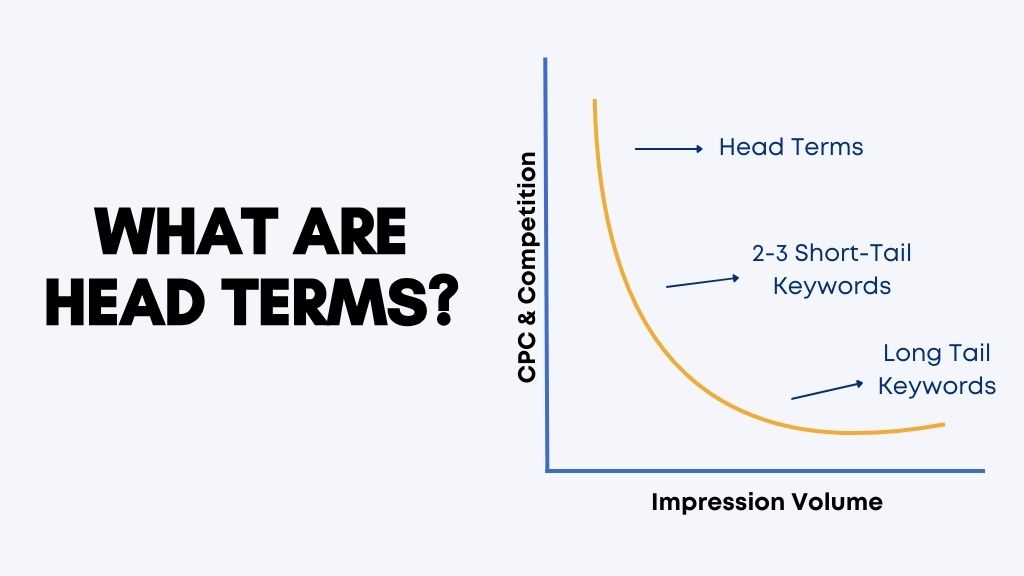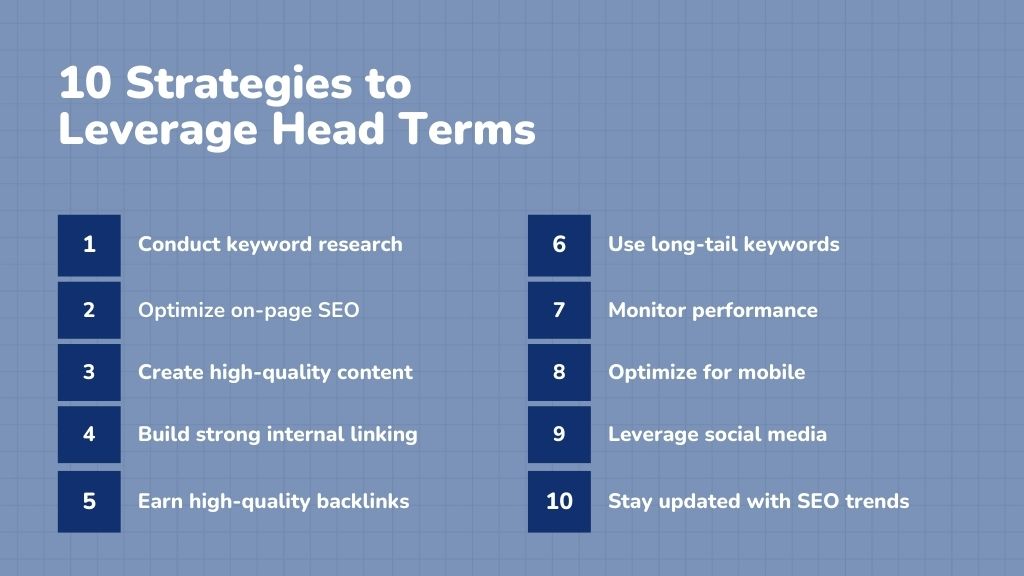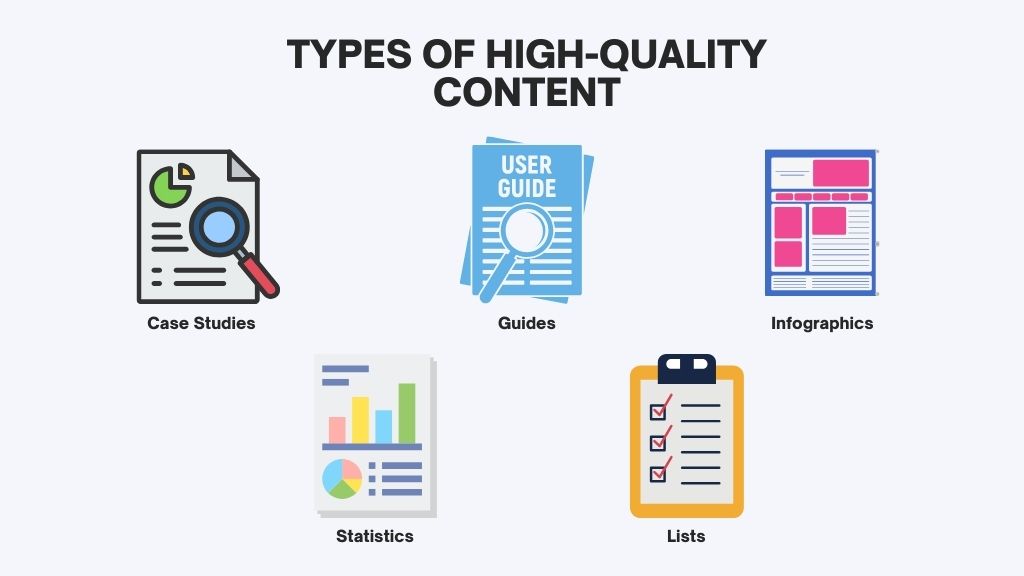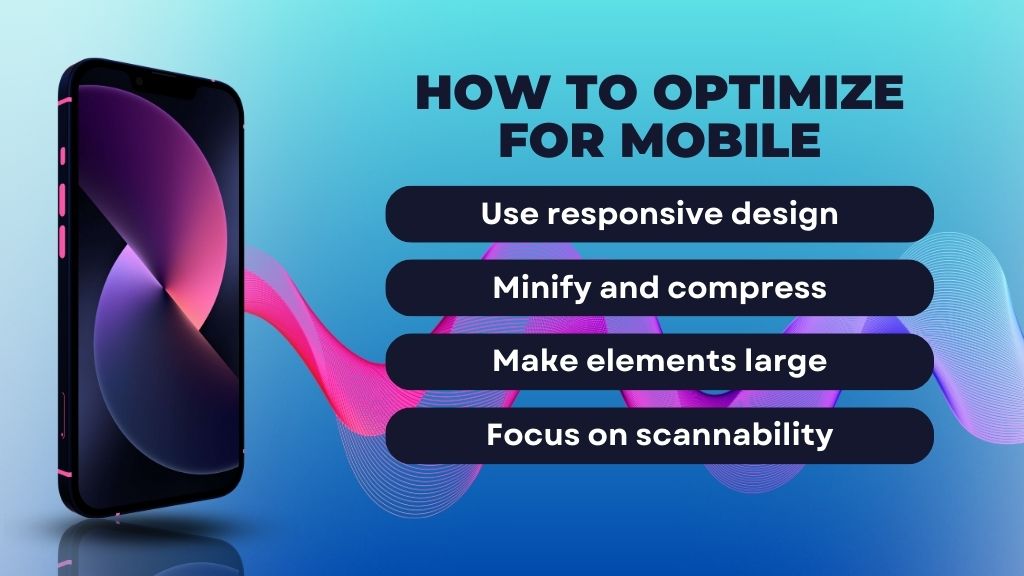How to Leverage Head Terms for SEO Success

Head terms, also known as short-tail keywords, are essential for SEO success. These are broad, high-volume keywords that many users search for. Leveraging head terms can help you attract a larger audience, improve your search engine rankings, and boost your website’s visibility. In this blog post, we will explore how to use head terms to achieve SEO success effectively.
In this article:
What Are Head Terms?
Head terms are short, generic keywords that typically consist of one or two words. They have high search volume but are also highly competitive. Examples of head terms include “shoes,” “travel,” and “fitness.”
Head terms are important for several reasons:
- High Search Volume: They attract a large number of searches, which can drive significant traffic to your site, even direct traffic.
- Broad Reach: They cover a wide range of topics, making them suitable for attracting a diverse audience.
- Brand Awareness: Ranking well for head terms can enhance your brand’s visibility and credibility.
Challenges of Using Head Terms
High Competition
Because head terms are so popular, they are highly competitive. Many websites aim to rank for these keywords, making it challenging to achieve high rankings.
Broad Intent
Head terms have broad search intent, meaning that users searching for these terms may be looking for various types of information. This makes it difficult to create content that satisfies all user needs.

Strategies to Leverage Head Terms
1. Conduct Thorough Keyword Research
Use SEO tools like Ahrefs, SEMrush, and Moz to find head terms relevant to your industry. These tools provide valuable data on search volume, competition, and related keywords.
Study your competitors to see which head terms they are targeting. Analyzing their strategies can provide insights into effective keyword usage.
Most importantly, understand the intent behind the head terms you are targeting. This will help you create content that meets users’ needs and ranks well in search results.
2. Optimize On-Page SEO
Include head terms in your title tags. Title tags and meta titles are a crucial on-page SEO factor and help search engines understand the content of your page.
Additionally, write compelling meta descriptions that include head terms. Meta descriptions appear in search results and can influence click-through rates.
Use header tags (H1, H2, H3) to structure your content and include head terms. This makes your content more readable and helps search engines understand its hierarchy.
Incorporate head terms naturally into your content as well. Avoid keyword stuffing, which can harm your rankings. Focus on creating informative, engaging content that adds value to users.

3. Create High-Quality Content
Develop comprehensive guides that cover broad topics related to head terms. These guides can attract a wide audience and position your website as an authority site.
Write detailed articles that provide in-depth information on specific aspects of head terms. Detailed content can rank well and attract targeted traffic.
Enhance your content with images, videos, infographics, and other multimedia elements. Multimedia makes your content more engaging and can improve user experience.
4. Build Strong Internal Linking
Use internal links to connect related pages on your website. Internal linking helps distribute page authority and keeps users engaged.
Use descriptive anchor text that includes head terms. This helps search engines understand the context of the linked pages and can improve rankings.
5. Earn High-Quality Backlinks
Write guest posts for reputable websites in your industry. Guest blogging helps you earn backlinks and increases your site’s authority.
Reach out to influencers, bloggers, and industry experts to promote your content. Building relationships with these individuals can lead to valuable backlinks. Link Genius helps you find high-quality backlink opportunities to boost your SEO.
Promote your content on social media, forums, and other online platforms. The more exposure your content gets, the more likely it is to earn backlinks.
6. Use Long-Tail Keywords
While head terms are important, long-tail keywords can complement them. Long-tail keywords are more specific and less competitive, making them easier to rank for.
Long-tail keywords can capture niche traffic that head terms might miss. This traffic is often more targeted and has higher conversion potential.
Incorporate long-tail keywords into your content alongside head terms. This strategy can help you rank for both broad and specific queries.
7. Monitor and Analyze Performance
Utilize tools like Google Analytics and Google Search Console to monitor your website’s performance. These tools provide insights into traffic, user behavior, and keyword rankings.
Regularly track the rankings of your head terms. Understanding how your keywords are performing can help you make informed adjustments to your SEO strategy.
Based on your performance data, adjust your strategies to improve rankings and traffic. Continuous optimization is key to SEO success.

8. Optimize for Mobile
Ensure your website has a responsive design that works well on all devices. Mobile-friendly websites provide a better user experience and rank higher in search results.
Optimize your website’s load times by compressing images, minifying code, and using a content delivery network (CDN). Fast-loading websites are favored by search engines and users alike.
Follow mobile SEO best practices, such as using mobile-friendly navigation, optimizing touch elements, and avoiding intrusive interstitials.
9. Leverage Social Media
Share your content on social media platforms to increase its reach and visibility. Platforms like Facebook, Instagram, X, and TikTok can drive social traffic to your website and improve your rankings.
Engage with your audience on social media by responding to comments, answering questions, and participating in discussions. Building a strong social presence can enhance your brand’s authority.
Encourage social sharing to generate social signals. While social signals are not a direct ranking factor, they can indirectly influence your SEO by increasing visibility and traffic.
10. Stay Updated with SEO Trends
Stay updated with the latest SEO trends and algorithm changes by following industry news and blogs. Understanding current trends can help you adapt your strategies.
SEO is constantly evolving, so continuous learning is essential. Keep refining your skills and knowledge to stay ahead in the competitive landscape.
Heading to SEO Success
Leveraging head terms effectively can improve your website’s search engine rankings and drive more traffic. As you work on optimizing your website for head terms, use Link Genius to strengthen your SEO efforts.
Secure valuable backlink opportunities to boost your site’s authority and visibility. Book a demo today and take your SEO to the next level with Link Genius!
